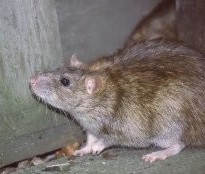The Health & Safety Executive (HSE), the UK”s Competent Authority for biocides, issued on 9 August 2013, a paper outlining the features required of a stewardship approach for the use of Second Generation Anticoagulant Rodenticides (SGARs).
This follows the press release issued on 22 July which invited pest control industry stakeholders, co-ordinated through the Campaign for Responsible Rodenticide Use (CRRU), to develop a stewardship regime for second generation anticoagulant rodenticides (SGARs). Draft proposals are to be prepared by the end of September 2013. (Updated on 4 September now mid- October). Click here to read.
The paper released on 9 August – click here to read this paper in full – describes the high level features required of a stewardship approach, taking account of the views expressed by stakeholders. The next stage will be to develop the detail of stewardship, providing a practical way forward in the use of SGARs that strikes a balance between environmental, public health and commercial concerns.
| This document provides the group, co-ordinated by CRRU, a reference point to develop the detailed arrangements for stewardship to present their proposals back to an oversight group (made up of HSE, DEFRA and DoH) by the end of September 2013. (Updated 4 September: Now mid October) If the proposals can be agreed by the oversight group, implementation will start from mid October 2013. (Updated 4 September: Now early 2014).
Alongside this, HSE will determine the regulatory requirements for the authorisation of SGAR products to align with the stewardship regime. This will include any changes required to existing authorisations for difenacoum and bromodiolone products – HSE is in discussion with the authorisation holders to agree the transition arrangements. |
|
|
|
HSE states that a monitoring scheme must be agreed and in place before the stewardship progresses, with industry leading (and paying for) the monitoring. Assuming agreement on an acceptable stewardship regime can be reached, on-going monitoring of the success of the stewardship regime will follow implementation, led by HSE. Success criteria will be agreed, with periodic review points to consider the impact of the regime and make changes if required. A decision to halt stewardship may be necessary if the effect on non-target organisms is deemed to be unacceptable. This whole process began in August 2012, (see Pestnews – click here) when HSE invited comments from stakeholders and other interested parties on Environmental Risk Mitigation Measures for SGAR use in the UK. In April this year, HSE held a meeting with stakeholders to discuss the responses (as reported in Pest issue 27 – click here). The outcome was that future use of SGARs requires a stewardship campaign for all main rodenticide user groups, including pest control professionals, local authorities, farm and land managers, gamekeepers and amateurs. |
||


